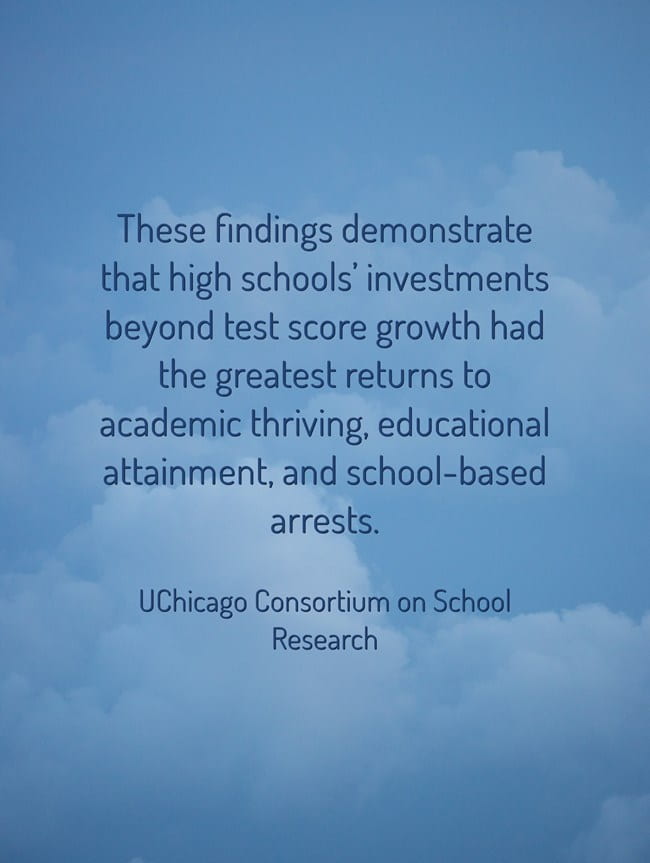
The UChicago Consortium on School Research is one of the most respected education research groups in the country, and they just published Investing in Adolescents High School Climate and Organizational Context Shape Student Development and Educational Attainment.
I’m going to share my short-and-sweet synopsis, along with a tweet from one of the study’s co-authors, but it’s definitely worth reviewing the entire report.
Here’s my take:
As the text box above quotes: These findings demonstrate that high schools’ investments beyond test score growth had the greatest returns to academic thriving, educational attainment, and school-based arrests.
The study characterizes those investments as ones in socioemotional development (SED), which it frames as:
emotional health, school connectedness, academic engagement, grit, and study habits. We found that these measures clustered into two domains: academic effort and work (academic engagement, grit, and study habits) and social well-being (school connectedness and emotional health).
The study highlights the importance of “school climate,” especially emphasizing “Supportive Environment, Ambitious Instruction, and Collaborative Teachers” as “the strongest predictors of school effectiveness” and goes on to say:
School climate explained approximately threequarters (75.9%) of the variation in school effectiveness on its own, 18 percentage points more than demographics, average math and ELA test scores, and average behaviors (suspensions, disciplinary infractions, and attendance) combined (63.8%).
Here’s that tweet:
School climate (as measured on surveys) is a very good predictor of school effectiveness (as measured by effects on test scores, survey measures of socio-emotional development, behaviors, interactions with the criminal justice system, and educational attainment). pic.twitter.com/o4Jcg42jan
— C. Kirabo Jackson (@KiraboJackson) April 17, 2023
I’m adding this info to The Best Resources For Learning About The Importance Of Ninth-Grade For Students – & How To Support Them.
I’m putting it there because the study’s research focused on ninth-graders.
I’m going to end with this passage from the report:
The long-run impact of fostering SED was also greater than fostering test score growth. Fostering SED yielded nearly double the impact on high school graduation relative to fostering test score growth. Fostering SED was also 15–20% more impactful for improving enrollment in college and reducing school-based arrests relative to fostering test score growth. Comparing across all VAMs, fostering SED had the greatest impact on educational attainment and fostering behaviors had the greatest impact on reducing school-based arrest.



Recent Comments